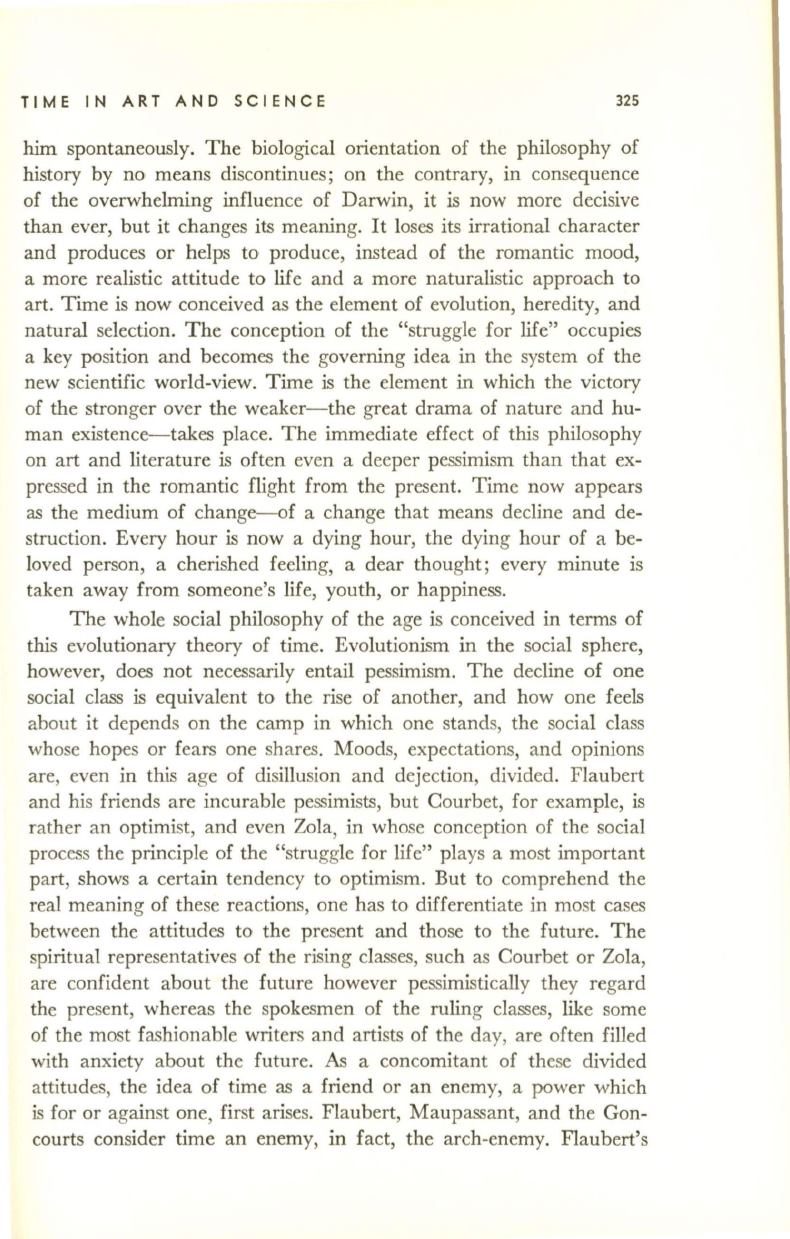
TI M E I N ART AND SCI ENCE
325
him
spontaneously. The biological orientation of the philosophy of
history by no means discontinues; on the contrary, in consequence
of the overwhelming influence of Darwin, it
is
now more decisive
than ever, but it changes its meaning. It loses its irrational character
and produces or helps to produce, instead of the romantic mood,
a more realistic attitude to life and a more naturalistic approach to
art. Time is now conceived as the element of evolution, heredity, and
natural selection. The conception of the "struggle for life" occupies
a key position and becomes the governing idea in the system of the
new scientific world-view. Time
is
the element in which the victory
of the stronger over the weaker-the great drama of nature and hu–
man existence-takes place. The immediate effect of this philosophy
on art and literature is often even a deeper pessimism than that ex–
pressed in the romantic flight from the present. Time now appears
as the medium of change-of a change that means decline and de–
struction. Every hour is now a dying hour, the dying hour of a be–
loved person, a cherished feeling, a dear thought; every minute is
taken away from someone's life, youth, or happiness.
The whole social philosophy of the age is conceived in terms of
this evolutionary theory of time. Evolutionism in the social sphere,
however, does not necessarily entail pessimism. The decline of one
social class is equivalent to the rise of another, and how one feels
about it depends on the camp in which one stands, the social class
whose hopes or fears one shares. Moods, expectations, and opinions
are, even in this age of disillusion and dejection, divided. Flaubert
and his friends are incurable pessimists, but Courbet, for example, is
rather an optimist, and even Zola, in whose conception of the social
process the principle of the "struggle for life" plays a most important
part, shows a certain tendency to optimism. But to comprehend the
real meaning of these reactions, one has to differentiate in most cases
between the attitudes to the present and those to the future. The
spiritual representatives of the rising classes, such as Courbet or Zola,
are confident about the future however pessimistically they regard
the present, whereas the spokesmen of the ruling classes, like some
of the most fashionable writers and artists of the day, are often filled
with anxiety about the future.
As
a concomitant of these divided
attitudes, the idea of time as a friend or an enemy, a power which
is for or against one, first arises. Flaubert, Maupassant, and the Gon–
courts consider time an enemy, in fact, the arch-enemy. Flaubert's


